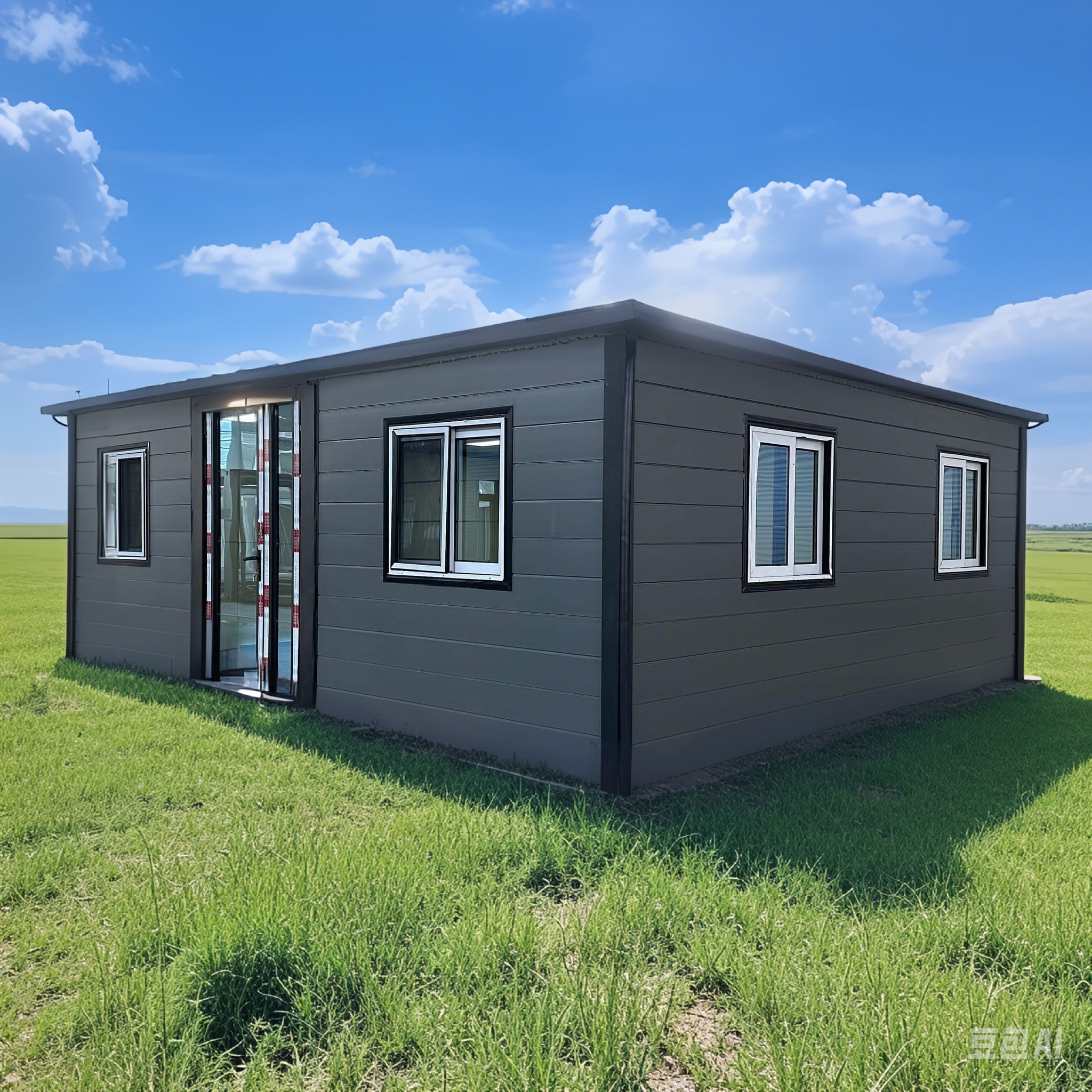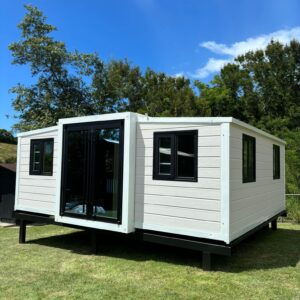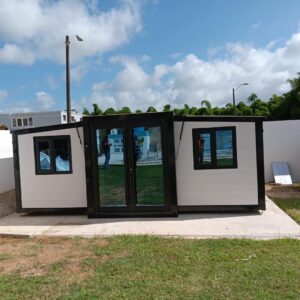“It looks cool, but is it sturdy?” “Living in a metal box… won’t it be an oven in the summer and a freezer in the winter?” “How many years will this house last? Is it a good long-term investment?”
If you’re considering an expandable container house, these questions are undoubtedly on your mind. As an innovative form of architecture, it’s completely understandable for consumers to have concerns about its long-term performance. After all, a home is not just a dwelling; it’s a significant asset that holds your family’s future.
It’s time to bust the myths and answer these critical questions with facts. This guide provides a deep dive into the durability, safety, climate resilience, and long-term value of expandable container homes to help you make an informed decision.
Deconstructing the Core: How Strong Are Its Bones?
The lifespan of a house begins with its structure.
- The Material: Expandable container homes are not made of simple sheet metal. Their main frame is constructed from high-strength galvanized steel. This material is specifically treated for outstanding corrosion resistance and is widely used in demanding industrial and architectural applications.
- The Design Lifespan: With professional design and proper maintenance, a high-quality container structure has a design lifespan that can easily reach 25 to 30 years or more, which is comparable to the standards for many modern modular buildings.
Facing the Elements: Climate Resilience and Comfort
The living experience inside a “metal box” is entirely dependent on its “skin”—the insulation system.
- Advanced Insulation Technology: The walls of modern expandable container homes are typically constructed with sandwich panels filled with Class-A fire-resistant insulation like Rock Wool or Polyurethane (PU). The thermal performance of these materials is far superior to traditional brick, effectively blocking out extreme heat and cold to keep the interior comfortable year-round.
- A Double Barrier: Paired with double-glazed windows, this system minimizes energy loss, creating a quiet, comfortable, and energy-efficient living environment. A well-designed container home can even be more energy-efficient than some older, traditionally built houses.
Safety First: Can It Withstand Nature’s Tests?
The heart of a home is the feeling of security. The steel structure of a container inherently offers several safety advantages.
- Structural Integrity: Its integrated steel frame design provides excellent performance against high winds and seismic activity. When correctly installed and anchored to a suitable permanent foundation, its structural stability is more than capable of handling harsh weather conditions.
- Fire Resistance: Steel itself is a non-combustible material. When combined with non-combustible insulation like Rock Wool, the home’s overall fire-resistance rating can meet very high standards, often exceeding the fire codes in many regions.
Long-Term Ownership: Maintenance and Value
Every house requires maintenance, and an expandable container home is no exception. The good news is that its upkeep is quite straightforward.
- Key Maintenance Points:
- Corrosion Checks: Periodically inspect the exterior of the house, especially at joints and corners, to ensure the protective coating is intact. Any scratches or dings should be touched up promptly to prevent rust.
- Seal Integrity: The weather seals and gaskets on the expanding sections are crucial for maintaining airtightness and watertightness. They should be cleaned and inspected regularly for signs of aging or damage.
- Roof Drainage: Ensure the roof’s drainage system is clear to prevent water from pooling.
- On Value: As prefabrication and modular construction become more widely accepted, the market value of these homes is steadily increasing. A well-maintained container home, situated in a desirable location with all the proper legal permits, can absolutely be considered an asset that holds or even increases in value over time.
The Verdict: A Trustworthy Long-Term Investment
So, can an expandable container home last a lifetime? The answer is: within a reasonable and expected timeframe of several decades, with professional installation and proper maintenance, it can absolutely serve as a safe, comfortable, and reliable home.
This is not a fleeting trend, but a smart solution based on mature industrial technology and modern building science. When you choose a reputable manufacturer and ensure a compliant installation process, you’re not just investing in a “cool” exterior, but in a durable, secure, and future-proof home.




评价
目前还没有评价